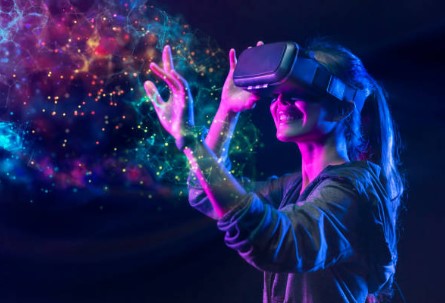Virtual Reality
Explore the immersive world of Virtual Reality through our blog. Discover insights, trends, and innovations that shape the future of this exciting technology.
Smart Village Computer hub
9/14/20242 min read


Virtual Reality: Stepping into a New Dimension
Introduction
What is Virtual Reality?
Virtual Reality is a simulated experience that can be similar to or completely different from the real world. It typically involves the use of VR headsets, which provide a 360-degree view of the virtual environment, along with motion tracking to allow users to interact with the virtual world in a natural way.
How Does VR Work?
VR systems consist of several key components:
VR Headsets: These are the primary devices used to experience VR. They include screens for each eye, providing a stereoscopic effect that creates the illusion of depth. Popular VR headsets include the Meta Quest 2, Sony PlayStation VR2, and the HTC Vive Pro 2.
Motion Tracking: VR systems use sensors to track the user’s movements and adjust the virtual environment accordingly. This can include head tracking, hand tracking, and even full-body tracking.
Controllers: Handheld controllers allow users to interact with the virtual environment. They often include buttons, triggers, and joysticks for navigation and interaction.
Software: VR experiences are powered by software that creates and renders the virtual environment. This can range from simple 3D models to complex, interactive worlds.
Applications of VR
VR is being used in a wide range of fields, offering unique experiences and solutions:
Gaming: VR gaming provides an immersive experience that traditional gaming cannot match. Players can explore virtual worlds, interact with characters, and experience gameplay from a first-person perspective.
Education: VR is revolutionizing education by providing immersive learning experiences. Students can take virtual field trips, explore historical sites, and conduct virtual science experiments.
Healthcare: VR is used for medical training, therapy, and rehabilitation. Surgeons can practice procedures in a risk-free environment, and patients can use VR for pain management and physical therapy.
Real Estate: VR allows potential buyers to take virtual tours of properties, providing a realistic sense of space and layout without the need for physical visits.
Entertainment: Beyond gaming, VR is used in movies, concerts, and virtual social experiences. Platforms like VRChat offer social VR experiences where users can interact with others in virtual worlds.
The Future of VR
The future of VR is bright, with ongoing advancements in technology and applications:
Improved Hardware: Future VR headsets will likely be lighter, more comfortable, and offer higher resolution displays. Innovations like eye-tracking and haptic feedback will enhance the immersive experience.
Expanded Applications: As VR technology becomes more accessible, its applications will continue to grow. This includes areas like remote work, virtual tourism, and advanced simulations for training and education.
Social VR: The rise of social VR platforms will enable more people to connect and interact in virtual spaces, creating new opportunities for socialization and collaboration.
Conclusion
Social Media
© Copyright 2025. All rights reserved. Smart Village Computer Hub.
